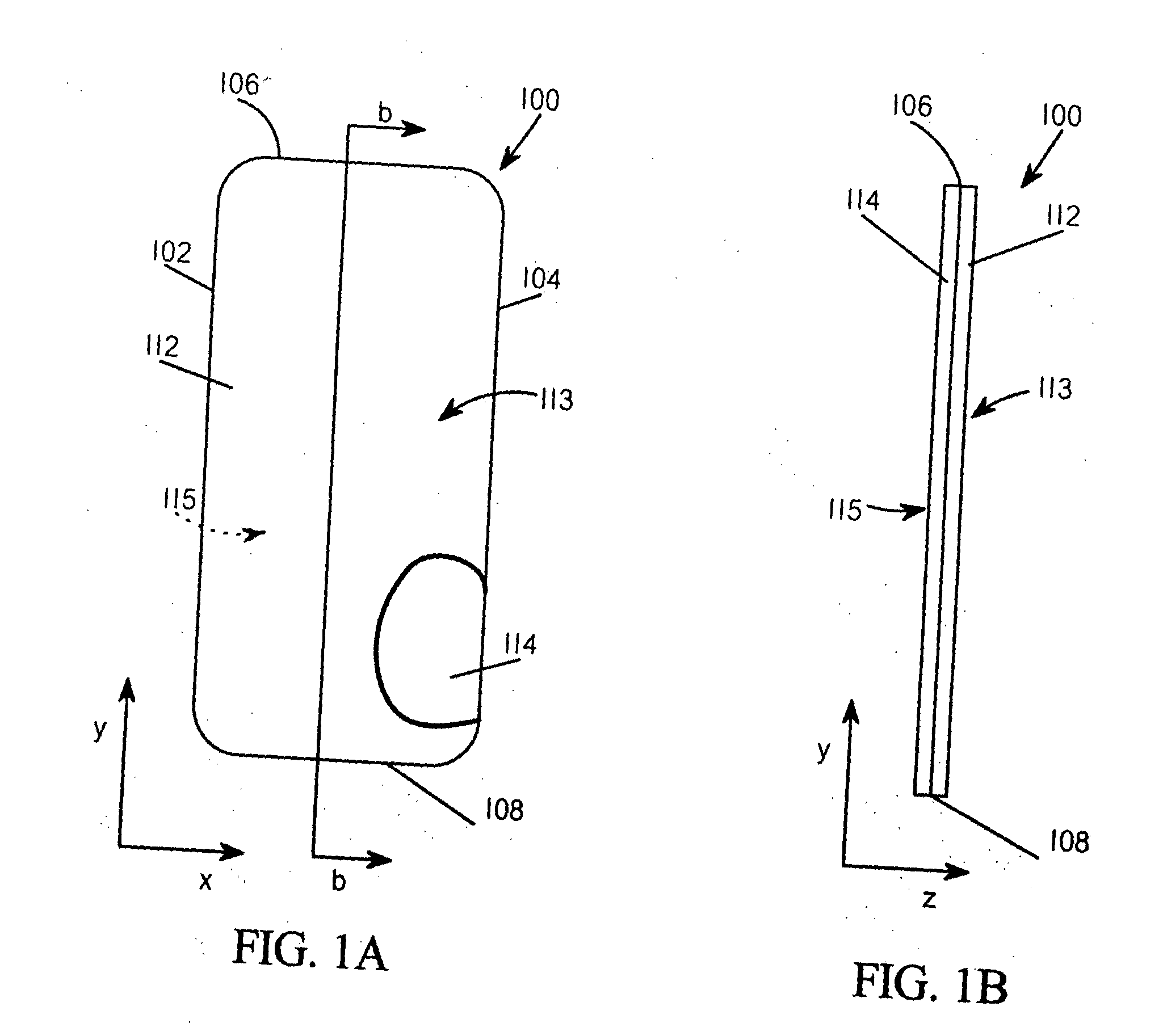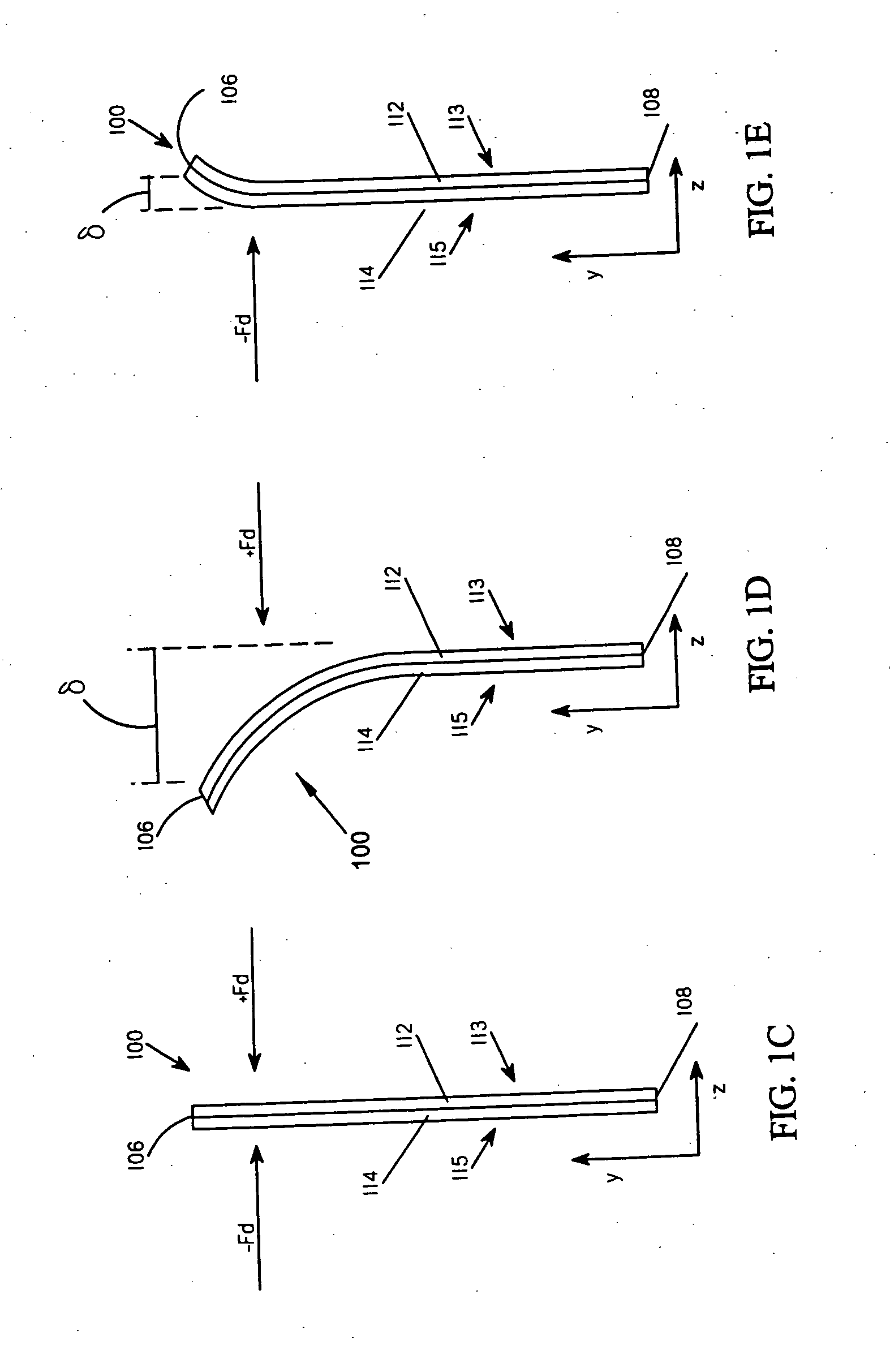Preferential bend structure and articles containing said structure
a technology of preferential bend and structure, applied in the field of preferential bend structure, can solve the problems of excessive rigidity, deflection, buckling, etc., and the good or component and the structure is particularly susceptible to deflection
- Summary
- Abstract
- Description
- Claims
- Application Information
AI Technical Summary
Problems solved by technology
Method used
Image
Examples
example
Example 1
[0164] A suitable two layer preferential bend structure may be made similar to that shown in FIG. 1G; however the discontinuities are within the auxiliary layer in this example. A base layer may be 20 mm wide (x direction)×60 mm long (y direction)×0.76 mm thick (z direction). The base layer may be a natural polypropylene sheet available from Roberts PolyPro Inc., Charlotte, N.C. under product code F040F-M. The auxiliary layer may comprise twelve segments each having the size 20 mm wide (x direction)×5 mm long (y direction)×0.76 mm thick (z direction). The auxiliary layer may be a natural polypropylene sheet available from Roberts PolyPro Inc., Charlotte, N.C. under product code F040F-M. The twelve auxiliary layer segments may be disposed on the base layer such that the width of each auxiliary layer segment is be arranged along the width of the base layer. The auxiliary layer segment are to be butted together such that line separating each segment is substantially parallel ...
example 2
[0165] A suitable two layer preferential bend structure may be made similar to that shown in FIG. 2C. A base layer may be 20 mm wide (x direction)×60 mm long (y direction)×0.76 mm thick (z direction). The base layer may be a natural polypropylene sheet available from Roberts PolyPro Inc., Charlotte, N.C. under product code F040F-M. The intermediate layer may comprise eight segments each having the size 20 mm wide (x direction)×5 mm long (y direction)×0.76 mm thick (z direction). The intermediate layer may be a natural polypropylene sheet available from Roberts PolyPro Inc., Charlotte, N.C. under product code F040F-M. The intermediate layers are disposed on the base layer such that the width of each intermediate layer segment is arranged along the width of the base layer. The intermediate layer segments are spaced on the base layer to maintain a 2 mm separation between segments. The intermediate layer may be affixed to the base layer with a suitable hot melt adhesive such as product ...
PUM
 Login to View More
Login to View More Abstract
Description
Claims
Application Information
 Login to View More
Login to View More - R&D
- Intellectual Property
- Life Sciences
- Materials
- Tech Scout
- Unparalleled Data Quality
- Higher Quality Content
- 60% Fewer Hallucinations
Browse by: Latest US Patents, China's latest patents, Technical Efficacy Thesaurus, Application Domain, Technology Topic, Popular Technical Reports.
© 2025 PatSnap. All rights reserved.Legal|Privacy policy|Modern Slavery Act Transparency Statement|Sitemap|About US| Contact US: help@patsnap.com



